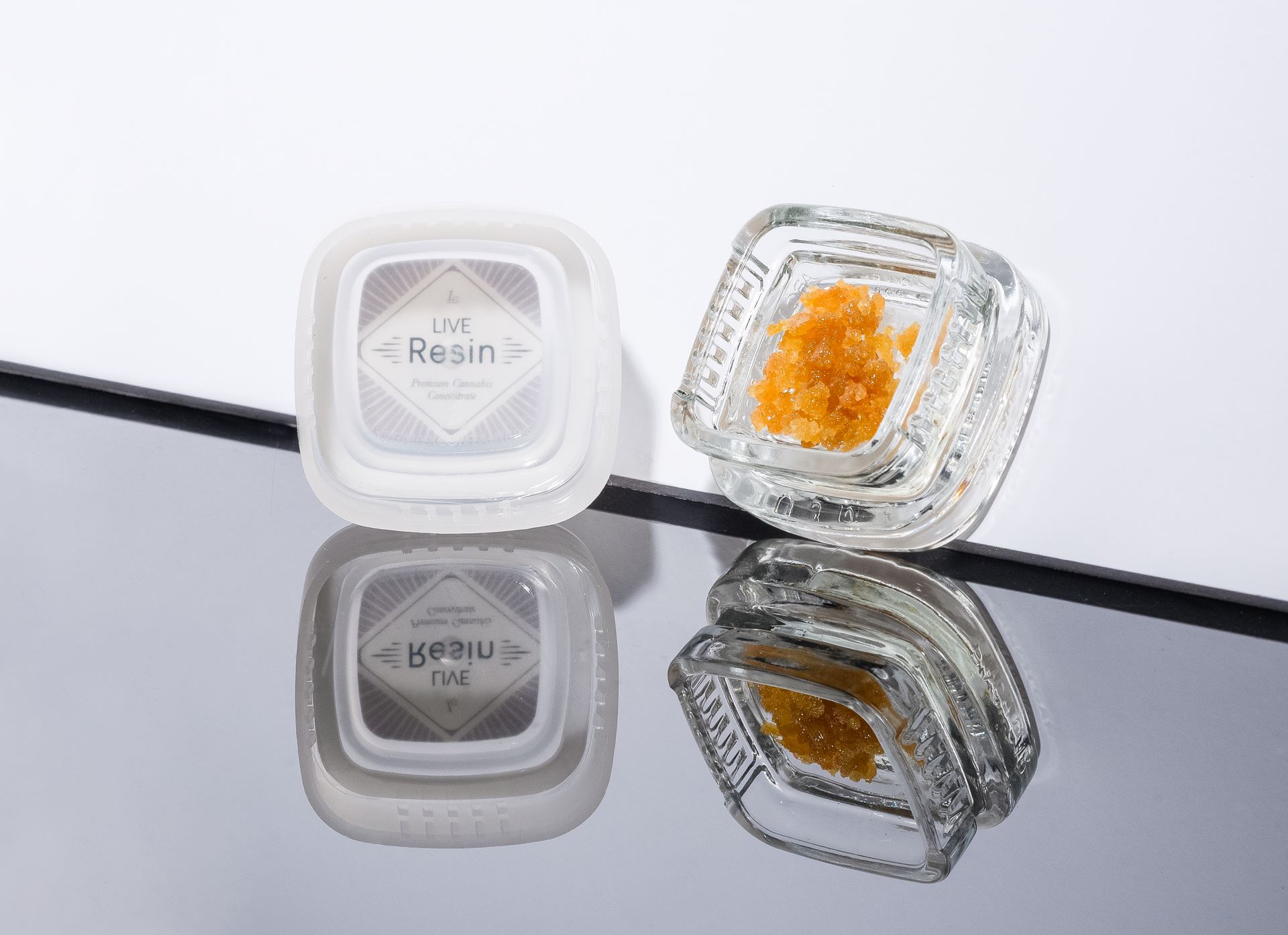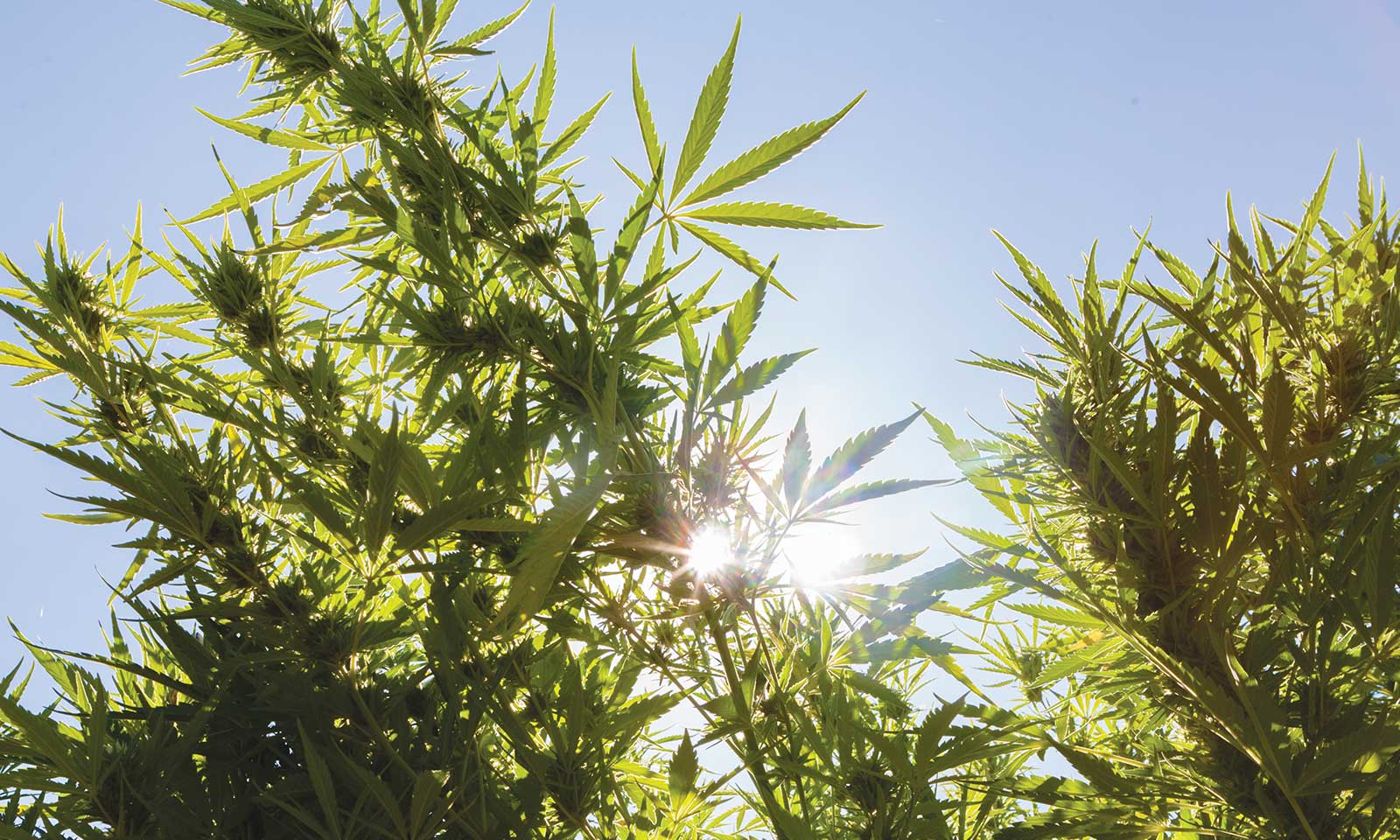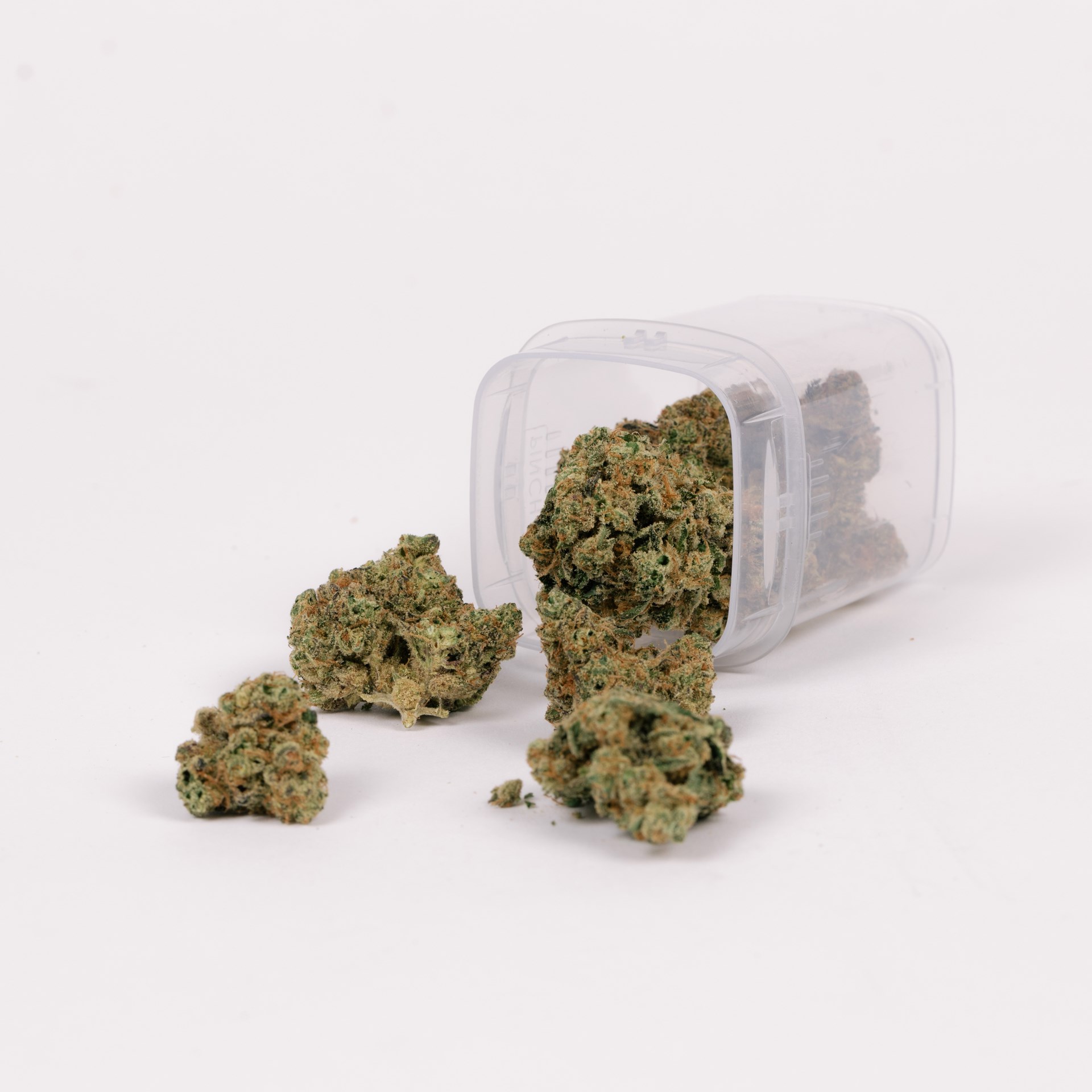
Indica vs. Sativa + The Importance of Terpenes
From indica & sativa, to a variety of terpenes, it can be tough to know which cannabis strains are right for you! Check out our guide to help you learn the basics!
Stay in touch!
Join our email list to receive Calyx content & product updates.
By Calyx Containers in Cannabis Info
Cannabis is often categorized as indica, sativa, or a hybrid of the two. Consumers’ and budtenders’ common understanding of indicas and sativas is often very black and white. Indica strains are generalized to be more relaxing with full-body effects, while sativa is thought to be more energizing, with an increase in focus and head-high effects. Hence the saying that indica has you “in da couch” and sativa has you “staying on the dance floor.”
The truth is that indica/sativa categorization isn’t always relevant to the bud’s effects, and is better used by cannabis growers to differentiate their plant types. In this article, we’ll dive into the plants’ differences, how hybrids come into play, and the true hero of cannabis effects: terpenes!

Sativa vs. Indica vs. Hybrid
The Swedish botanist, Carl Linnaeus, published Species Plantarum where he classified all cannabis plants as “Cannabis sativa L.,” with “Cannabis” as the genus and “sativa” as the species. “Sativa” comes from the Latin “sativum,” meaning “cultivated.”
So everything was a sativa until 1785 when French naturalist and biologist Jean-Baptiste Lamarck updated the naming conventions. He created two distinct species: “Cannabis sativa” and “Cannabis indica,” its name meaning “from India,” where it was thought to originate.
Cannabis indica
The indica plant is identifiable by its short, broader, and dense leaves. They are also compactly branched, giving them their classic bushy appearance. Indica plants generally grow up to two to four feet, making them common for indoor grows.
Here are some popular indica strains:
- Ice Cream Cake
- Purple Punch
- Zkittles
- Granddaddy Purple
- Bubba Kush
- Northern Lights
- Blueberry
- Grape Ape
Cannabis sativa
Sativa plants grow much larger than indica plants—think five to 18 feet tall. They can be identified as long and lanky, thin-leaved, and often consist of fewer branches. Fewer branches can mean that they dry out faster and might not retain moisture well.
These are some of the most popular sativa strains:
- Sour Diesel
- Jack Herer
- Green Crack
- Durban Poison
- Strawberry Cough
- Amnesia Haze
- Super Lemon Haze
- Tangie
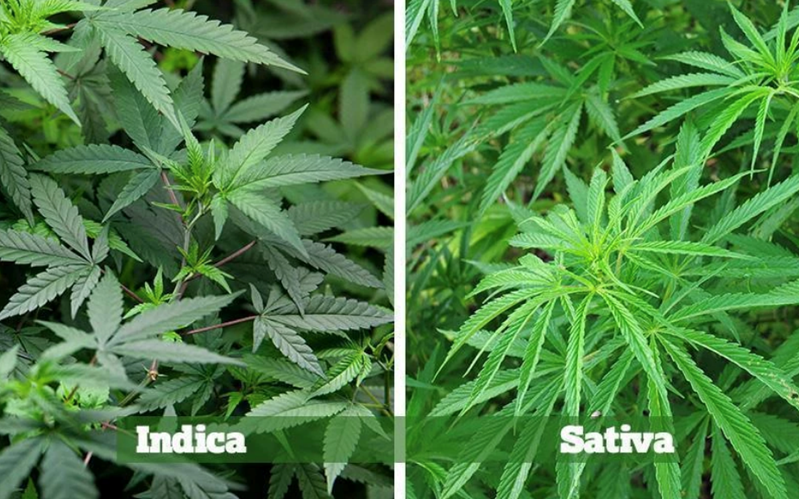
Photo courtesy of Cannabis Tours
Indica-Sativa Hybrids
Hybrid strains are exactly that, a hybrid of indica and sativa strains. Since there’s been a long history of blending and cross-breeding strains, it’s rare to find a “pure” sativa or indica plant. The “indica” or “sativa” buds a consumer finds at dispensaries are still, in fact, hybrids with genetics inherited from both strains. So it’s technically safe to say that every strain is actually a hybrid.
If hybrids sound more like your jam, here are a few of the most popular ones:
- Wedding Cake
- GG4
- Dosidos
- Blue Dream
- Gelato
- GSC
- OG Kush
- GMO Cookies
Budtenders can describe strains as “sativa-dominant” or “indica-dominant” to more accurately communicate the product’s expected effects. Although it’s easy to rely on the indica vs. sativa vs. hybrid classification, the more accurate way to determine what products deliver the most desired effects is through cannabinoids and terpenes.
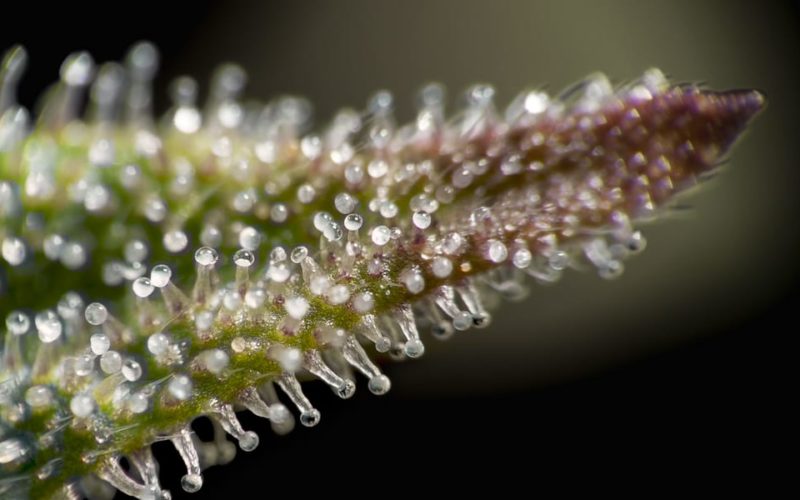
Photo courtesy of High Times
Cannabinoids: CBD + THC
If you look closely at cannabis buds you’ll notice it’s covered in sticky hair-like crystals called trichomes. These contain thousands of terpenes and cannabinoids that contribute to the taste and effects of cannabis. You’re probably familiar with the two most popular cannabinoids: THC and CBD.
THC
Delta-9-tetrahydrocannabinol aka THC is the psychoactive contributor and is most likely what you think of when you think of cannabis. It can relieve symptoms of pain and nausea, but how does it actually work within the body?
Humans naturally have cannabinoid receptor systems in the brain that THC binds to. When THC binds to our body’s endocannabinoid system, it produces the desired psychoactive effects. These effects lend themselves to recreational enjoyment or medicinal use.
CBD
Cannabidiol aka CBD is a non-psychoactive compound that’s known for relieving stress, pain, and inflammation. It is one of the most abundant compounds found in cannabis strains, which means all THC products have even a small percentage of CBD.
In contrast to THC, CBD doesn’t bind to your brain's receptors, but rather helps regulate how they react to cannabinoids. By regulating these receptors, it can keep THC from activating them, causing a less intense psychoactive effect. This makes THC and CBD blends ideal for a variety of consumer types, such as those with low tolerance or medical patients seeking specific therapy.
Terpenes
Terpenes come from the same glands as THC and CBD and account for cannabis scents such as pine, berries, or citrus. Plus, they directly contribute to strain types and their effects. Terpenes are the more accurate way to determine if you’ll “stay on the dance floor” or be “in da couch.”
There are many types of terpenes, but the four most common are Myrcene, Caryophyllene, Limonene, and Terpinolene. Myrcene is most common and can help users sleep, battling conditions like anxiety and insomnia. According to Cresco Labs, if myrcene is present in a volume greater than 0.5%, the strain is considered an indica. But if the volume is less than 0.5% then the strain is a sativa.
Thus, terpenes are the better determinant of a cannabis strain. So rather than going to budtenders asking for general sativas or hybrids, consumers can get exactly what they want by asking for specific strains with the terpenes they know will deliver the right effects.
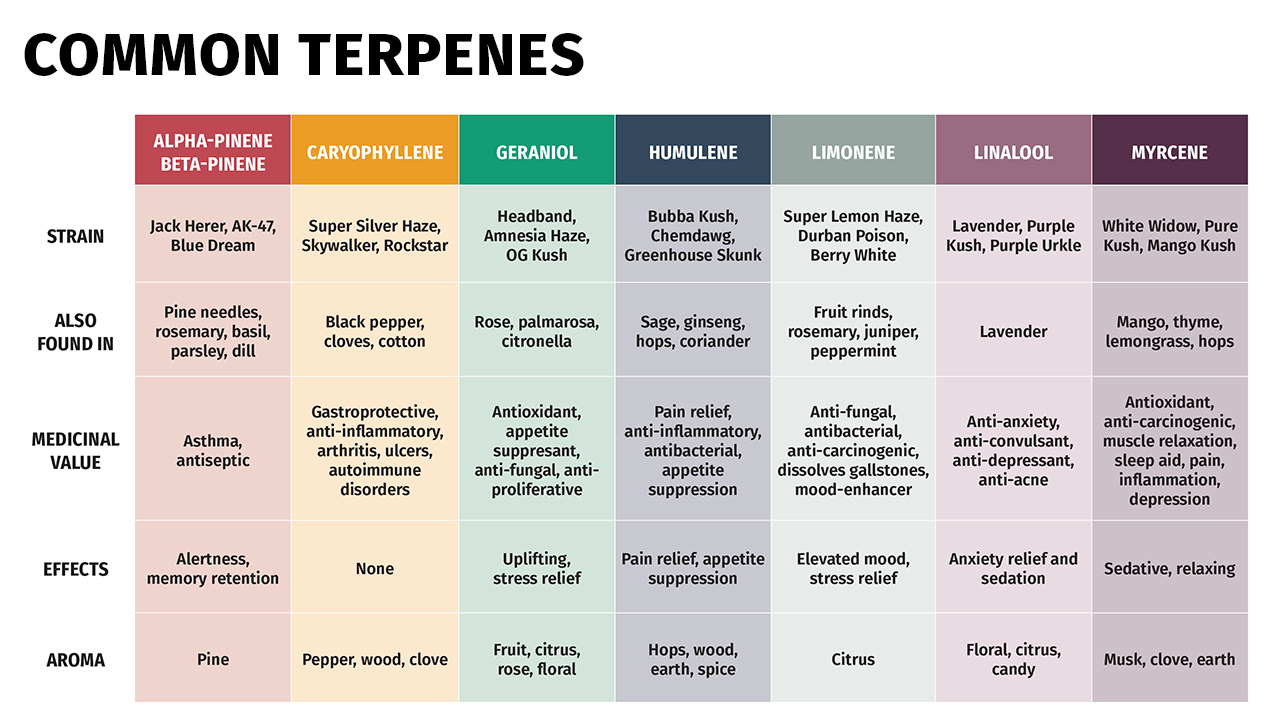
Photo courtesy of Lucid Green
The full capabilities of the cannabis plant are constantly proven to reach new heights. Not many casual consumers are aware that a high quality experience with cannabis is attributed to all cannabinoids and terpenes present in the product, not just THC percentage.
Terpenes, THC, CBD, and numerous other cannabinoids such as CBN, CBC, CBG, etc. work together in our bodies to create unique effects. This experience is called the Entourage Effect, which can contribute to greater pain relief, or can result in a more intense and full body high. While there are not many studies on the combination of these cannabinoids and its proven effects, we encourage you to see for yourself. If possible, consult with a licensed cannabis professional to see how you can take full advantage of this incredible plant.
Calyx + Terpene Retention
When packaging cannabis products, we recommend using a moisture-controlling, UV-blocking container to ensure that the cannabis and terpenes stay as fresh as the day they were packaged. To optimize preservation, we recommend that the packaging have a resealable lid that works to maintain ideal moisture levels, a non-porous glass base, and colored opacity for UV protection.
Retain terpenes with a tight seal that controls the container's internal environment, so you can keep your product smelling, tasting, and feeling the way it’s intended to.
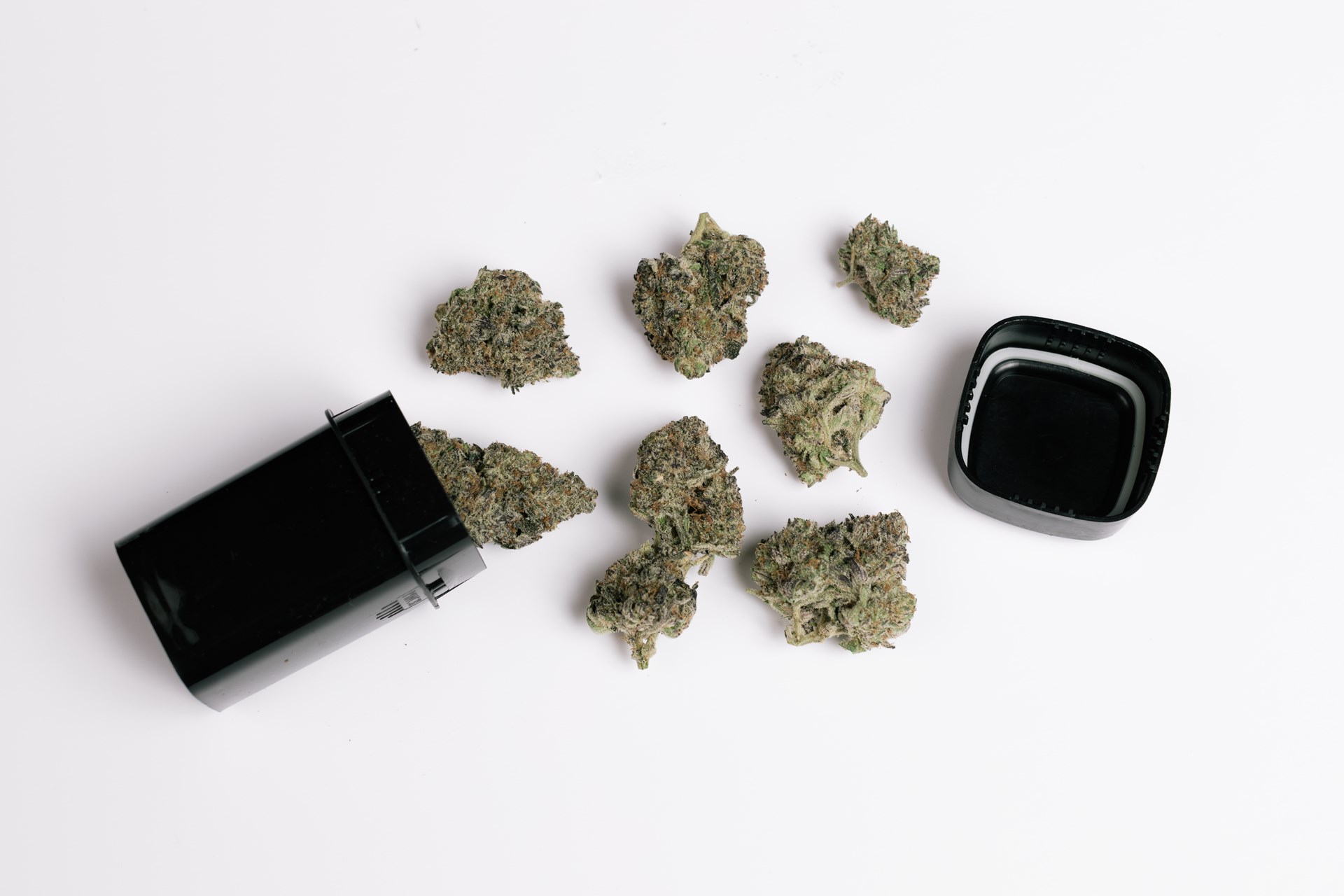
So Which Strain is the Best?
That’s up to the consumer! Cannabis businesses will want to ensure that dispensary products are properly labeled, and that menus properly dictate the terpene and cannabinoid compounds. Properly communicated testing information, consumer education, and budtender knowledge will help your cannabis business establish trust amongst other brands.
But no matter what, make sure to invest in quality packaging to maintain a quality product. You don’t want to lose any of those precious terps that keep customers coming back for more!
Contact Calyx Containers:
(617) 249-6870
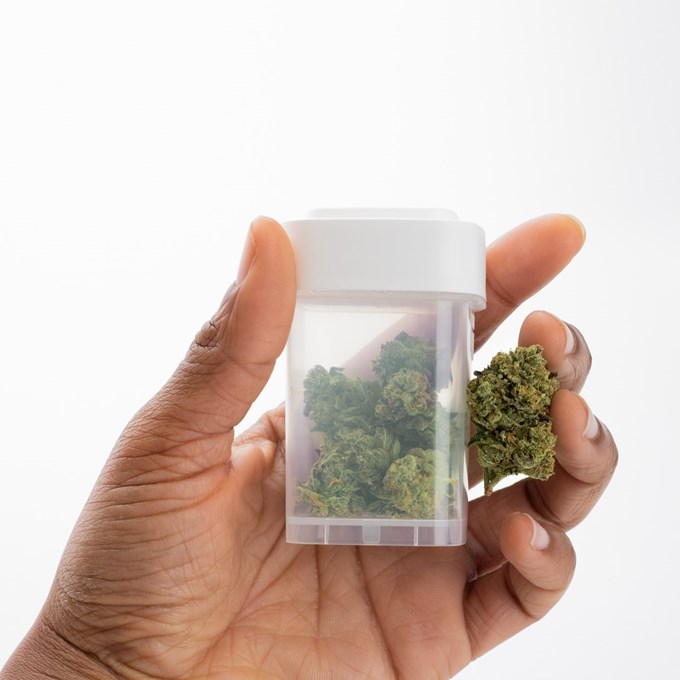
Curious about Calyx? Stay up to date on the latest in cannabis packaging.
